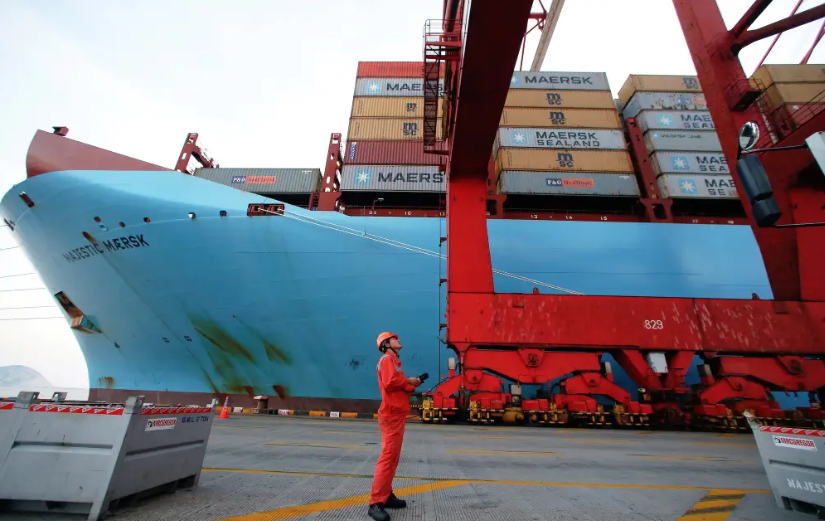Navigating Customs with Consolidated Shipments from China (2025 Guide)
Introduction
Consolidated shipping—grouping multiple Chinese-origin orders into one air-pallet or ocean container—is a cost-saving cornerstone for EU and US importers. However, starting in May 2025, changes to customs rules—especially around de minimis exemptions and layered tariffs—mean careful planning is now essential. This guide equips importers with the knowledge to navigate customs efficiently, ensure compliance, and minimize delays and unexpected costs.

1. Key U.S. & EU Customs Policy Updates in 2025
✅ Major U.S. Changes
- As of May 2, 2025, the U.S. lifted the $800 de minimis duty‑free exemption for shipments from China and Hong Kong. Small packages—even under $800—must now undergo formal entry and duties.华航运输Vogue Business+1Passport+1Reuters+7U.S. Customs and Border Protection+7Passport+7
- Effective August 29, 2025, the exemption ends for all countries; imported parcels face $80–$200 flat fees or a percentage-based tariff.维基百科+6Reuters+6巴伦杂志+6
- Many goods are now subject to Section 301 tariffs, a 20% IEEPA surcharge, and other regulatory fees—resulting in combined duty rates potentially exceeding 70%.华尔街日报+10供应链潜水+10Passport+10
🇪🇺 EU Developments
- The EU’s de minimis VAT threshold is already low (around €22), and proposals to cut it further are underway. Consolidated commercial customs entries are increasingly important for streamlined clearance compliance.维基百科供应链潜水
2. Why Consolidated Shipments Simplify Customs
- Single customs declaration: Instead of dozens of small entries, a consolidated pallet or LCL container requires just one customs entry and one broker fee.Reuters+15UPS+15Clearit USA+15
- Courier duties vs. formal entry: Parcel-by-parcel shipping now triggers flat tariffs or high ad-valorem duties per item, while consolidated loads fall under a single formal entry with more precise value declaration.Clearit USA+3U.S. Customs and Border Protection+3Passport+3
- Accurate HTS code assignment: Proper HS classification across the entire shipment avoids errors, rejections, and penalties.CBP客服Federal Register
3. Customs Documentation & Declarations
📄 Core Documents Required:
- Commercial invoice, showing transaction value and detailed item description.
- Packing list, indicating CBM, weight, and contents of each box/pallet.
- Bill of Lading (B/L) for ocean or Air Waybill (AWB) for air shipment.
- Certificates of origin, electronics compliance, or fumigation documents if applicable.丹富物流维基百科+1丹富物流+1
📦 Consolidation-Specific Guidance:
- Forwarders often provide a master invoice, combining goods from multiple suppliers.
- Ensure accurate HTS/HS codes, especially for items under trade-specific tariffs like apparel, electronics, or steel.Reuters+15Federal Register+15U.S. Customs and Border Protection+15Clearit USA
- In the U.S., since de minimis rules no longer apply, entries require the 10-digit HTSUS code and detailed importer data.巴伦杂志+2Federal Register+2Business Insider+2
4. Customs Entry Workflow: Step-by-Step
| Step | Detail |
|---|---|
| Forward Consolidation | All supplier packages sent to a Chinese warehouse; QC, stacking photos, pallet prep.华航运输+5TecEx+5丹富物流+5 |
| 2. Forwarder Booking | Master AWB/B/L issued; commercial invoice, packing list consolidated. |
| 3. Export Customs | Chinese export clearance handled by forwarder via e-customs with invoice/packing list. |
| 4. Arrival Declaration | Single customs entry at destination, duties calculated based on total CIF value. |
| 5. Duties Payment | Corporate or broker pays combined duties for all goods in one payment. |
| 6. Final Deconsolidation | Container or pallets opened at local warehouse; goods sorted and delivered individually. |
5. Common Customs Roadblocks & How to Avoid Them
- Mis-declared value or missing HTS code: Customs may hold the cargo. Always double-check invoice/HS entries.
- Certification gaps: Products like electronics, toys, or wooden goods may need export/import certificates.维基百科
- Multiple entries vs single batch: Split imports may trigger scrutiny—planning consolidated loads avoids this.
- Delayed data submission: U.S. policy changes now require 10-digit HTS codes before union entry.
- Exclusion from de minimis: Even shipments under $800 from China are now ineligible.维基百科+15U.S. Customs and Border Protection+15Clearit USA+15
6. Best Practices for Smooth Clearance
- Use an experienced customs broker familiar with Section 301, IEEPA, and China cargo rules.
- Label and organize documentation clearly: invoices, AWBs, certificates.
- Verify commodity codes (HS) in advance; avoid last-minute corrections at port.
- Opt for DDP service if possible, shifting duty liability and customs responsibility to your forwarder.C.H. Robinson丹富物流
- Maintain digital records, including consolidation warehouse photos and weight/volume logs.
- Audit your freight entry post-clearance to catch any overcharges or missing fees.
7. Case Study: Clothing Brand Shipping 5 CBM LCL to U.S.
- Load value: $5,000
- Ocean LCL freight (60 USD/CBM × 5 CBM) = $300
- Fuel surcharge & THC ~15% = $45 + $100
- Duties: 25% CAD/AGC + 10% IEEPA + VAT = ~35% total on declared value
- Final landed duties ≈ $1,750
- One customs entry vs 50 separate parcels ⇒ saves approx 50× $100 flat fees (parcel level).
- Smooth consignee release—provided HS codes correct and docs accurate.
8. EU vs. U.S.: How Customs Differ with Consolidation
🇺🇸 United States
- No more de minimis exemptions for China/HK—now formally ended globally by August 2025.Passport维基百科+4Business Insider+4Passport+4
- Requires HTSUS codes and either informal (Type 11) or formal (Type 01) entry depending on value.U.S. Customs and Border Protection
🇪🇺 European Union
- VAT on low-value imports applies even at low thresholds; de minimis rarely helps. Consolidated entries simplify compliance.
- CE markings, textile fiber composition forms, or fumigation certificates may be required depending on goods.
9. Consolidation Advantages Summarized
- ✅ Duty & fee savings through single entry.
- ✅ Reduced administrative burden: one broker invoice.
- ✅ Better cargo control: fewer hold-ups or subdivisions.
- ✅ Easier tariff compliance: accurate HTS classification across shipment.
- ✅ Compliance-ready documentation suited to changing trade policies.
10. Final Recommendations Checklist
- Confirm de minimis policy status for origin (China → US/EU).
- Collect supplier invoices and align HS code usage.
- Choose consolidation agents with customs-aware services.
- Opt for Master and House Bill documentation for tracking.
- Use DDP or broker-managed entry for simplified clearance.
- Verify insurance covers potential delays or port holds.
- Audit entries 30–45 days post-clearance to reconcile discrepancies.
